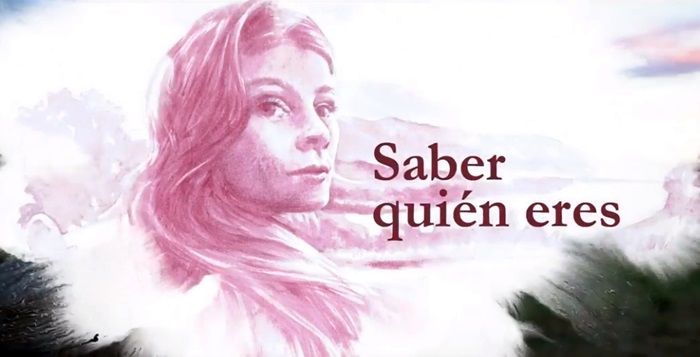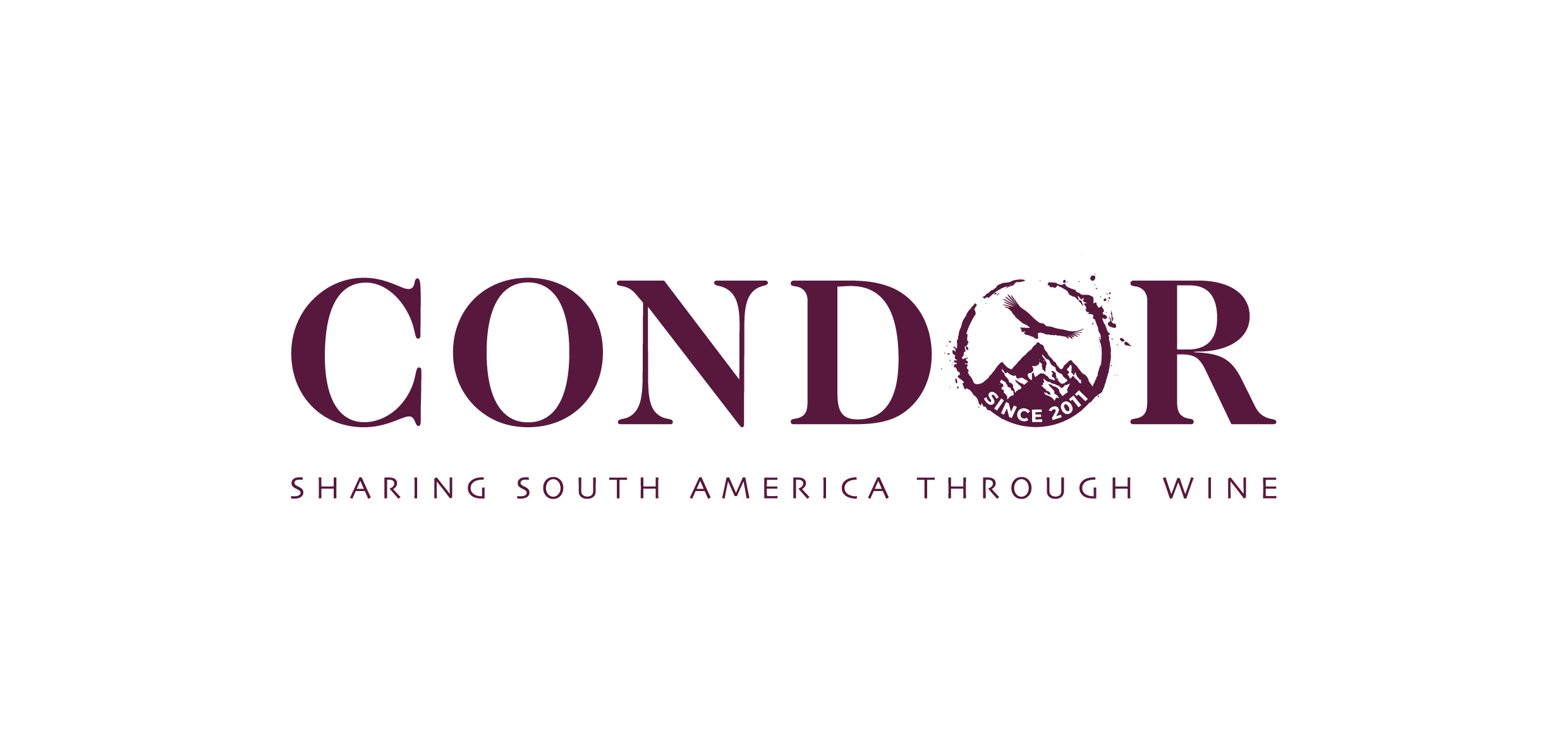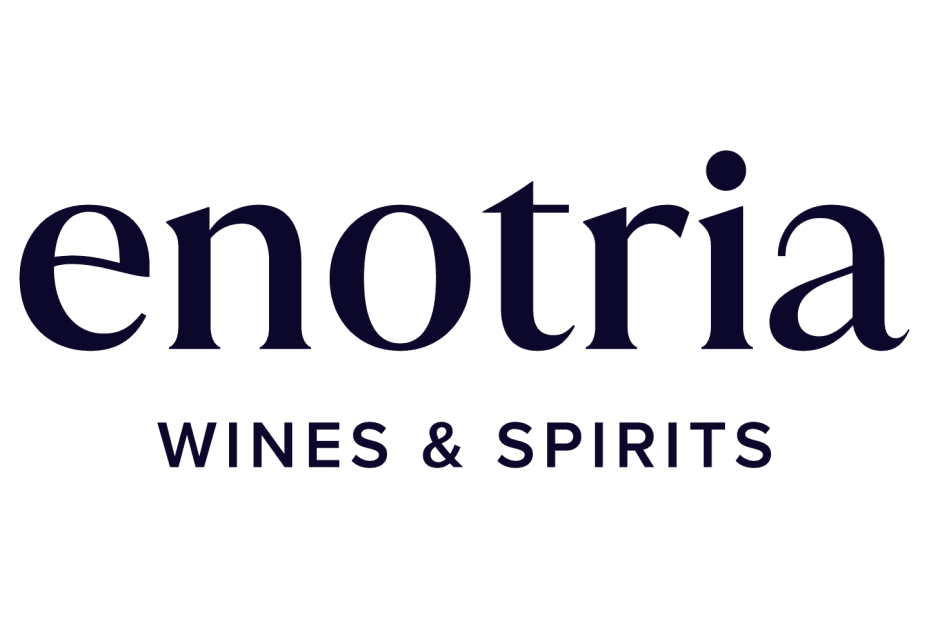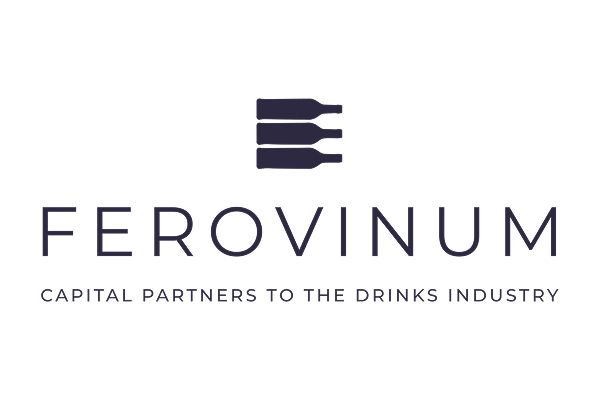It’s not just new sub-regions and single vineyard wines that are shaking up the Rioja wine category, but a new global campaign that gets its message across in Spanish. Ballsy? You bet…
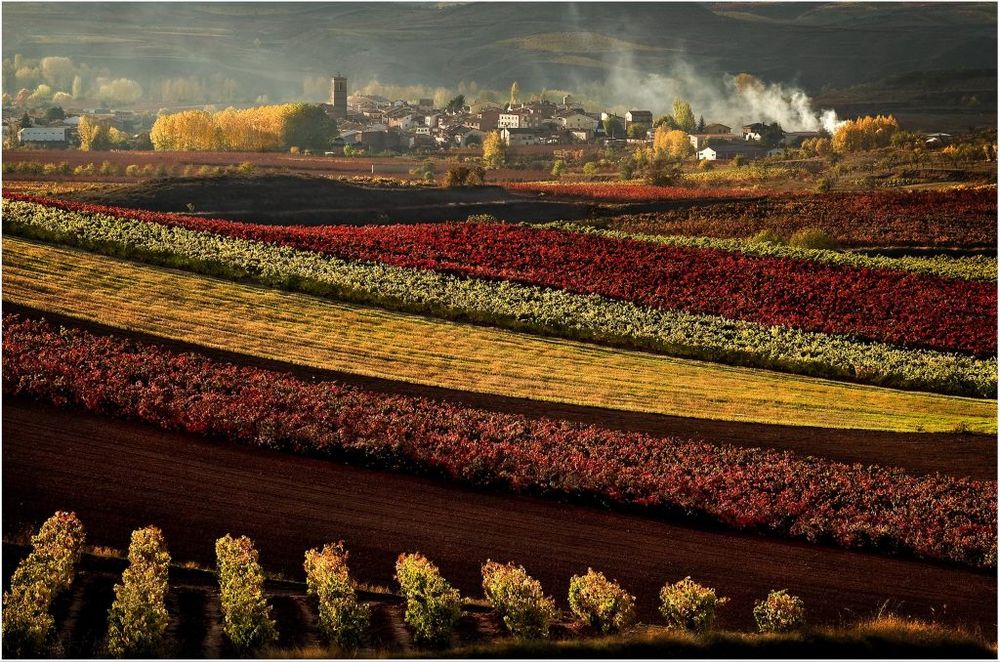
Rioja: the most well known and bought wine region in Spain
If there was a competition for the most self confident wine region in the world then there would be a few contenders. France alone could put forward Burgundy and Bordeaux, with the likes of the Loire and Beaujolais making a good case for themselves as well.
The United States would no doubt lead with Napa, Argentina would go all in with Mendoza, Italy with Tuscany, South Africa with Stellenbosch, Marlborough in New Zealand and you could take your pick from Victoria, the Hunter Valley or Adelaide Hills in Australia…mmm, perhaps not. Australia’s better just sticking with Australia.
But there is one outstanding, super self confident region we’ve not mentioned from one of the Old World’s most important wine countries. Spain. And which wine region do you think of first in Spain? Well, Rioja of course.
At least the Consejo Regulador DOCa Rioja thinks we do – and it has the numbers and evidence to back it up. Apparently Rioja (at 25%) has the highest recognition amongst UK consumers of wine regions around the world.
Global campaign
Which is partly why it’s been brave enough to unveil what will be a €11m global advertising campaign to put Rioja, it hopes, even more on the international wine map.
But this is no straightforward “come to Rioja” campaign with traditional pictures of vineyards, wineries and bottles of wine.
So confident are the Riojan wine authorities with their standing in the world, they are being doubly brave by backing the whole campaign under a standalone Spanish slogan: ‘Saber quién eres’ which means “knowing who you are” in English.
Speaking at the launch event in London last month, Jose Luis Lapuente, director of the Consejo, said it was confident enough to use a Spanish phrase to support its wines, for not only can Rioja lay claim to be the region where the Spanish language was founded, Rioja is the “flagship” wine region for Spain around the world.
To have such inner confidence is what makes Rioja what it is, and it’s that DNA that the phrase ‘Saber quién eres’ is looking to reflect, said Ricardo Aguiriano, the Consejo’s marketing director.
Nothing to worry about
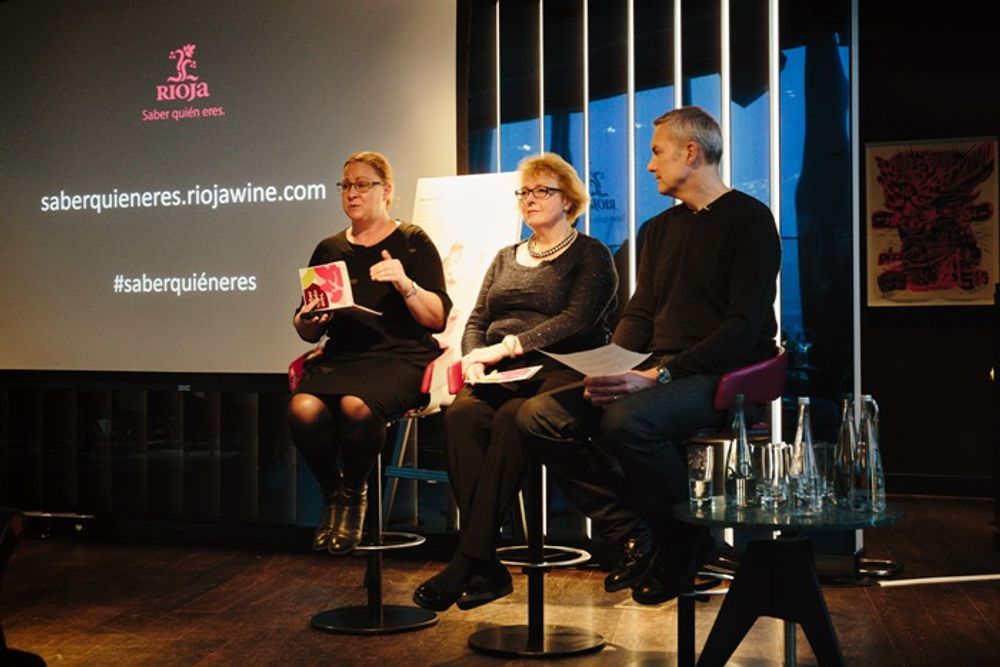
Direct Wines’ Beth Willard, Sarah Jane Evans MW and Fullers’ Neil Bruce get behind new Rioja campaign
Now chances are a lot of that good intentioned marketing speak and all the research that has gone behind it will remain in the beautifully crafted brand style guides for the new campaign and sail wonderfully over the average consumer’s head.
But that does not really matter. Rioja sells full stop. At leat that was the view of a trade panel of leading on and off-trade buyers.
Beth Willard, buying manager at Direct Wines, said Rioja was the most searched for wine region on its consumer website. “We sell more bottles of Rioja than we do Bordeaux,” she added. “The fact you can drink the wines as soon as they are released also helps.”
Neil Bruce, head of wine at Fuller’s the major brewer and on-trade wine wholesaler, said its own Rioja wine sales were bouncing, up 16% in volume, compared to an overall wine market that was struggling to get beyond 2% rise in volumes. “What is encouraging is all the action is now at the Crianza and Gran Reserva levels,” he said. “Crianza by the glass is where the volume really is. It would be great to get there too with Gran Reserva, but the opportunity is really there at Crianza Reserva. That is where we need to grow.”
He added: “But with wine lists getting smaller and smaller Rioja is very much a must stock category.”
Willard admitted the average consumer would struggle to give chapter and verse on the differences between all the levels of Rioja, but there is a clear understanding that it all comes down to ageing and length of time the wine has been in the bottle.
Either way when it comes to Spain, it’s Rioja that flying off the shelves. The latest UK retail trade figures show almost half of the Spanish wine category’s value, worth 48.5% comes from Rioja, and 37.8% of its volumes (Nielsen (MAT to 31 December 2017).
Both Willard and Bruce welcomed the new campaign. “Providing it enhances the overall Rioja image then it has to be a good thing,” said Bruce.
Willard said it certainly gives her confidence that it was right to double Direct Wines’ range of Rioja wines over the last 18 months. She certainly believes there is still room to push up the price of Rioja and she said recent development around promoting the place, the vineyards and the different areas of Rioja can only help.
Rules and regulations
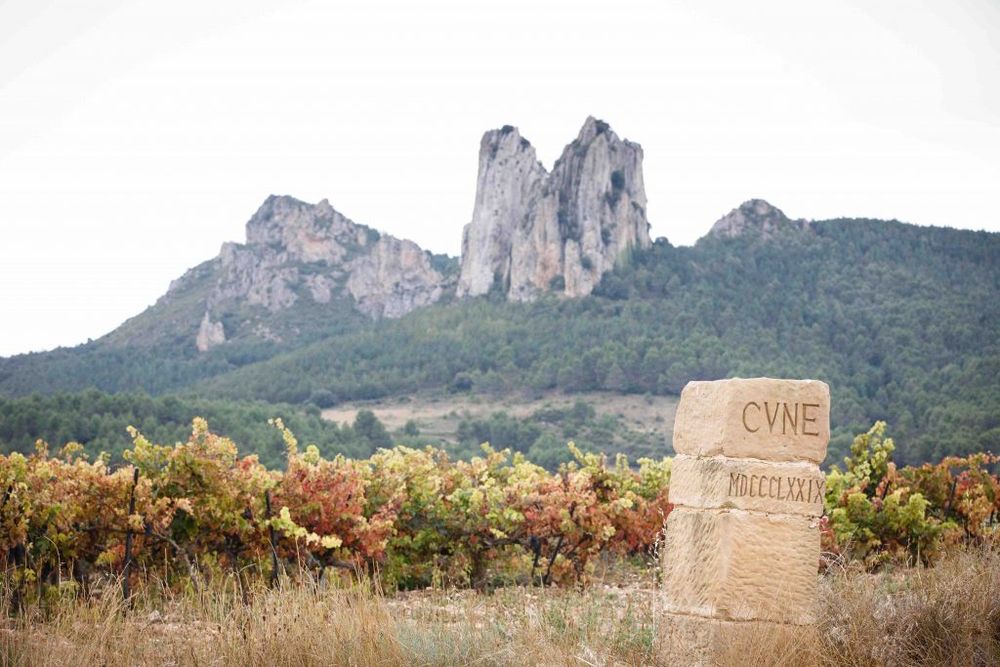
New regulations means wines can now be promoted down to the individual bodega they have been made from. Picture James Sturcke. www.sturcke.org
She was alluding to the various changes brought in last year that finally allows Rioja to dig down into selling the story about its regions, its terroir and the different zones and vineyards where its wines are made, rather than just put all their eggs in the ageing basket.
So in the last year we have seen:
Its different sub-regions, Rioja Alta, Rioja Alavesa, Rioja Baja (now called Rioja Oriental), are now called Vinos Zonas and can be the same text size as Rioja on the label. These regions are now allowed to have 15% of their grapes coming from a neighbouring zone, providing the wineries and growers have had a commercial partnership for 10 years.
Then there are Vinos de Municipio, which hope to consumers where in Rioja the wines are from down to the local villages, towns and municipalities. They can also now be promoted as the same size as Rioja on the label. The winery must be located in that village or town and 15% of grapes can also come from a neighbouring village.
Then there is the introduction of Viñedos Singulares, which allows producers to put their vineyard on the label, further demonstrating their terroir.
All of which is good news for Willard: “We can now explain to consumers where the wine comes from down to a single vineyard. It also demonstrates why that particular wine might cost a bit more.”
It also allows buyers to explore the region more and offer different styles of Rioja to their customers, said Bruce. “We have got two Crianzas because they are very different in style,” he explained.
Wine consultant and writer, Sarah Jane Evans MW, believes these moves will also help Rioja tourism and give visitors a better idea of where to visit, and what differences there are in the various parts of Rioja rather than just seeing it as one big region. “It’s a great idea and I think will really help gastronomic tourism in the area, as well as celebrating individual vineyards more,” she said.
Global performance
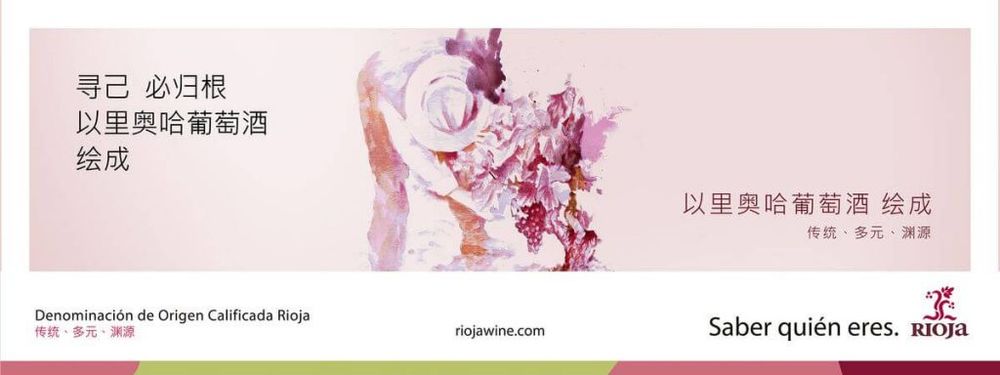
The campaign uses the sign off phrase ‘saber quién eres’ alongside the local language like here in China
The new campaign is very much a global initiative and one Rioja hopes will help it capitalise and build on what are already impressive international growth figures. Its total export sales were up 4.39% in 2017. These include significant sales uplifts in Canada (up 6.75%), the US (5.80%), Switzerland (4.21%), Holland (2.46%), Russia (39.71%), and China (17.31%).
The new campaign is to be rolled out in 11 of its key markets including the UK, Canada, China, Denmark, Germany, Ireland, Mexico, the Netherlands, Russia and the US.
In a further break from traditional wine advertising the campaign is to be fronted with a series of paintings, by Riojan artist, Carlos Corres, using wine from grapes native to Rioja, including Tempranillo, Garnacha, Mazuelo, Maturana and Graciano.
Statement of intent
It’s certainly a real statement of intent for a region that has had a lot to say for itself over the last 18 months. For as well as all the changes to its zones, vineyards and sub-regions, Rioja has also been tweaking the ageing requirements of its wines as well as including new regulations around the production of sparkling wine.
It means there are now new ageing requirements for its Reserva and Gran Reserva wines:
* Reserva wines must now be aged for three years, with at least 12 months in oak and six months in bottle. This is effective from January 2019.
* Gran Reserva must be aged for a total of five years, including minimum 24 months in oak and 24 months in bottle, down from36 months before.
* Producers are now able to produce single varietal white wines from a list of permitted grape varieties and capitalise on their continued growth – up to 9% of all Rioja sales in 2017.
Traditional sparkling wines can now be made in Rioja and released from 2019 onwards with a minimum ageing of 15 months, 24 months for Reserva and 36 months for Gran Anada.
All of which feels like you are sitting your WSET exams all over again, but will hopefully in time become part of the way both trade wine buyers and wine consumers look at wines from Rioja.
